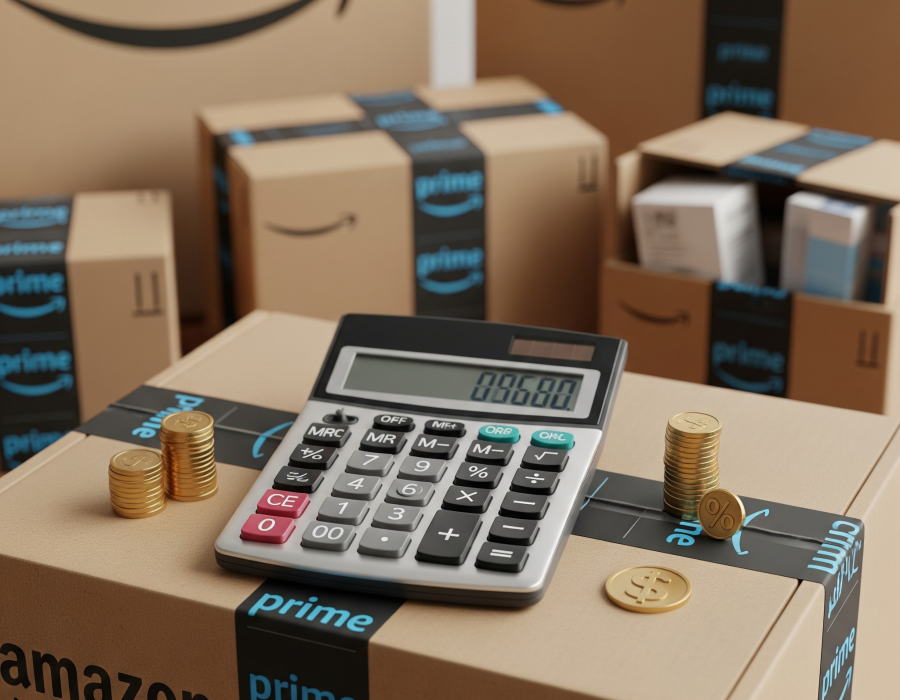The Amazon marketplace continues to surge in both traffic and seller competition. As we step into 2025, brands that once relied on organic growth alone now fight for every click and conversion. While Amazon handles the heavy lifting of storage, picking, packing, and customer service, the convenience is never free. Understanding the full scope of Amazon FBA Fees is the first step toward turning revenue into real profit.
A Quick Look Back Before We Look Forward
In 2024, many sellers saw margins shrink for two main reasons. First, Amazon raised fuel and inflation surcharges as global shipping costs spiked. Second, more brands jumped into Prime, swelling warehouse aisles and driving up long term storage expense. The lesson is clear: fees change often and usually climb. Going into 2025, intelligent forecasting and lean operations will separate winners from brands that merely break even.
Core Cost Categories Every Seller Must Track
Fulfillment fees
These charges cover picking, packing, and the final mile to the customer. Light standard size items stay inexpensive, but anything bulky or awkward instantly jumps into a higher bracket. In 2025, Amazon published a new pricing tier for items between twelve and fourteen ounces. That sliver of weight range looks minor yet could swing thousands of dollars a quarter if your catalog sits near the edge.
Monthly storage fees
January through September is the calm season. October through December brings peak surcharges that can double your bill. Hidden within that window is the critical metric called cubic foot utilization. If you send oversized boxes packed with air, the meter keeps running while your cash burns.
Aged inventory surcharges
After three hundred and sixty five days, items become liabilities. Amazon now scans inventory age weekly, not monthly, so stale stock moves from mild annoyance to urgent financial bleed far faster than in past years.
Removal and disposal fees
Brands often forget how expensive it is to pull back outdated packaging or rebrand goods. The removal cost per unit is lower for small standard items, but heavy items come with a high toll.
Dangerous goods and hazmat surcharges
New battery regulations and stricter chemical classifications mean more SKUs fall into hazmat review. Once labeled hazmat, a product faces its own fulfillment and storage table that dwarfs ordinary rates.
Headline Changes for 2025
The biggest shift is the regional delivery program expansion. Inventory placed closer to a buyer now qualifies for a micro credit that offsets part of the fulfillment fee. On the surface, that sounds like a win, but the rebate only applies if your item ships in the same region where it is stored. Poor forecasting or viral demand from a different coast can wipe out any savings.
Second is the sustainability initiative. Amazon wants sellers to cut packaging waste by ten percent this year. Items that meet new eco guidelines receive a small discount on fulfillment fees, while noncompliant SKUs pay a new environmental adjustment rate.
Hidden Costs That Sneak Up
Returns processing fees accelerate when customer remorse spikes after seasonal sales. Each return reenters the warehouse, gets inspected, and either restocked or labeled unsellable. That chain of events triggers a returns handling fee plus additional storage if the item lingers.
Lost in transit reimbursements seldom equal the true landed cost of your item. Amazon reimburses based on median selling price minus various deductions. Sellers of premium products often absorb the gap.
Packaging inserts can now trigger an unplanned service fee if Amazon classifies them as promotional materials not previously declared. Always double check compliance documentation when adding anything new to the box.
The One Bullet Point Every Seller Should Tape to the Monitor
- Keep no more than sixty days of inventory on hand unless your product rides a clear seasonal wave that justifies deeper stock
Money Saving Moves for 2025
Redesign packaging
Shaving half an inch from any side can drop your SKU into a lower dimensional weight tier. One outdoor gear brand saved eleven cents per unit on fulfillment, translating to tens of thousands of dollars a year.
Adopt just in time restocking
Utilize regional carrier partners to drip inventory into fulfillment centers instead of sending massive pallets all at once. You will dodge peak storage surcharges and maintain agile supply during demand spikes.
Audit reimbursements monthly
Use a third party tool or manual process to compare inventory snapshots. Lost or damaged units often slip through the cracks if you wait until quarter end.
Segment your catalog
Identify which SKUs truly benefit from Prime. Low velocity oversized goods might perform better through seller fulfilled Prime or even a direct fulfillment option where you keep inventory in your own warehouse.
Leverage virtual bundles
Combine slow moving accessories with a best seller to clear aged inventory while avoiding removal fees. Amazon backend systems treat the virtual bundle as a single ASIN, often yielding a lighter fulfillment rate.
Outsource prep work
Poly bagging, bubble wrapping, and labeling inside Amazon facilities stack up unplanned service fees. Third party prep centers close to port or factory can complete the same tasks at a fraction of the price.
Futureproofing Your Strategy
Marketplace insiders believe two trends will shape fee structures beyond 2025. The first is algorithmic surge pricing tied to warehouse congestion levels. That would mean real time cost fluctuations rather than predictable quarterly adjustments. The second is carbon indexing, where Amazon FBA Fees get linked to the transportation emissions of each unit. Brands that invest early in greener materials and optimized shipping lanes will gain a lasting edge.
Conclusion
Mastering Amazon economics is never a one-and-done exercise. The fee table in your dashboard acts like live code that updates without warning. Treat every change announcement as an opportunity to reassess sku mix, packaging, and replenishment rhythm. By tightening operations around storage, avoiding dead weight, and capitalizing on new discounts, sellers can stay profitable even as Amazon FBA Fees evolve. Vigilance today keeps margin erosion at bay tomorrow.






Comments